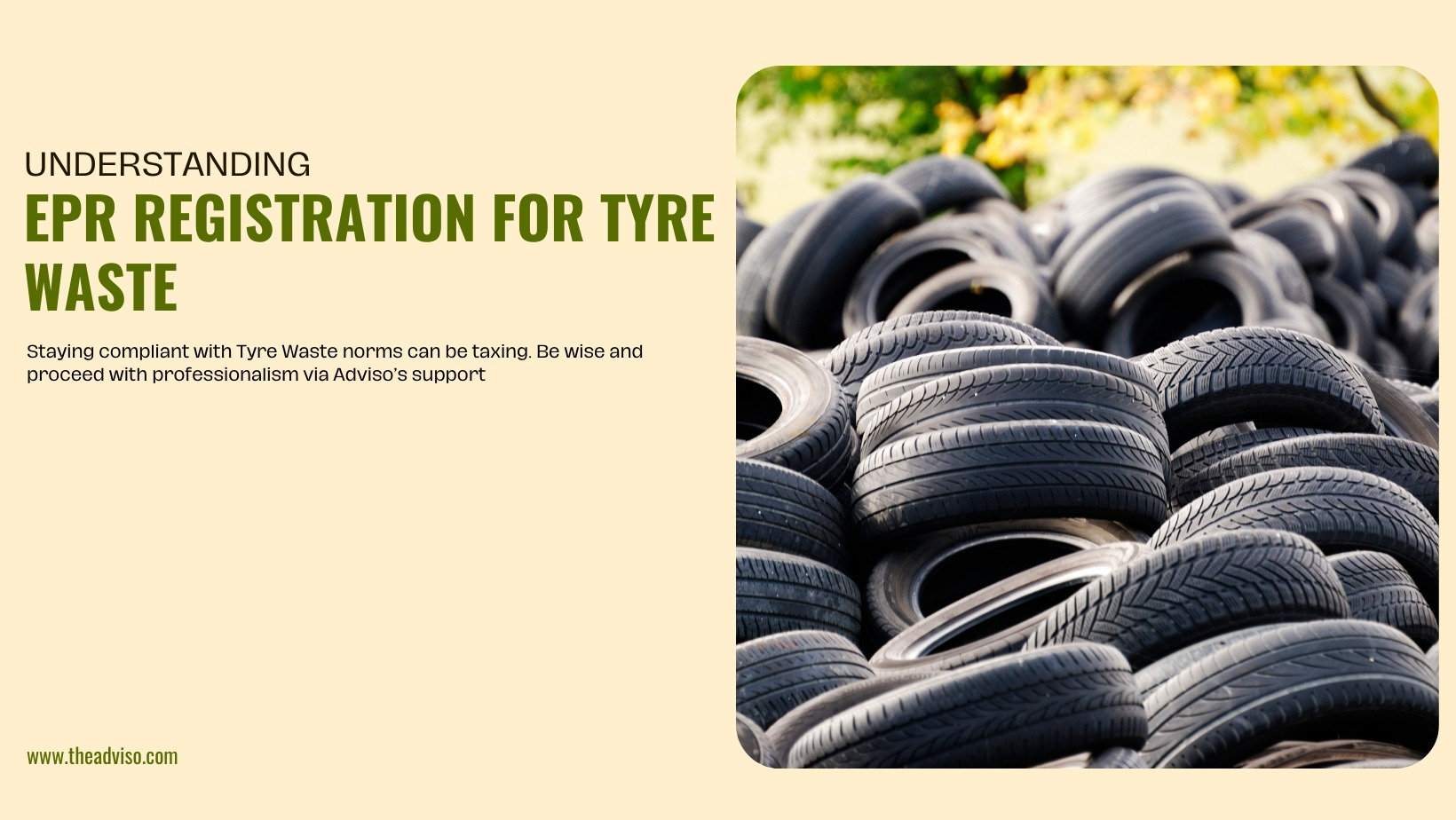EPR Registration
With India increasingly expanding its auto sector to fuel economy, the threat of ever-increasing tyre waste poses a significant risk to the environment. In Dec 2022, India surpassed Japan to become the third-largest auto market globally. The sector accounts for almost 7% of the nation’s GDP. This growth fueled the tire production rate by 21% in 2022 and 27% in 2023, clocking production of 217 million units in a year.
Additionally, the nation has produced 2.5 million metric tonnes of scrap tyres since 2019, adding to health and environmental concerns. To surmount this pressing issue, the Indian government came up with the concept viz. EPR i.e. Extended Producer Responsibility in 2022 with an aim to promote recycling and waste prevention of scrap tires.
An Overview of EPR Registration For Tyre Waste and its applicability
Ministry of Environment Forest and Climate Change (MoEF&CC) introduced the Hazardous and Other Wastes (Management and Transboundary Movement) Amendment Rules in July 2022 wherein the provisions concerning EPR for tyre waste were cited. The provisions hold producers, recyclers, and rethreaders liable for apt management of scrap tyres from the inception of their lifecycle. The management involves accumulation, recycling, and extraction of by-products such as steel wire, Pyrolysis oil, Crumb rubber-modified bitumen, etc.
Every stakeholder must adopt a tangible approach to minimizing waste generation. This could include comprehensive tracking of tyre lifecycle (from production to end-of-life), documenting every step and process that turns scrap tyres into useful byproducts, etc.
The Central Pollution Board grants the EPR registration after inspecting the paperwork and facility if required.
Who are exactly producers, recyclers, and retreaders from an EPR standpoint?
EPR registration essentially spans three stakeholders viz. Producers, Recyclers, and Rethreders. Let’s know about them in detail.
Recyclers
As per the Hazardous and Other Wastes (Management and Transboundary Movement) Amendment Rules, the producer is referred to as a person who:
- Manufacture or market new tyres within the country.
- Own a brand under which he sells new tyres produced by any third party locally.
- Import new tyres for selling in the Indian marketplace.
- Imports vehicle equipped with new tyres
- Runs an automobile company dedicated to the Indian market and relies on imported tyres
- Imports waste tyres.
Recycler
The recycler refers to a person or entity performing recycling activities. Recycling helps turn scrap tyres into by-products as
- Reclaimed rubber
- Crumb rubber
- Recovered carbon black (used as a key raw material for the production of new tyres)
- Crumb rubber modified bitumen (CRMB)
- Pyrolysis oil (it serves as a fuel that has wider applications, including furnace)
Note: The above amendments entail Schedule IX wherein different targets have been established for waste accumulation and recycling. The stakeholders must comply with these targets to stay compliant.
Retreader
Retreader refers to a person or entity that leverages processes to replace the tread and sidewall rubber of the scrap tyre with optimal structural integrity.
Check out our web stories: Top 6 benefits of establishing a sole proprietorship
Document Consideration for EPR Registration concerning waste tyres
Keep the following paperwork ready before applying for the EPR registration concerning waste tyre management:
- Aadhar number of the authorized individual
- PAN card details of the company
- GST registration number of the company
- CIN (Corporate Identification Number) of the company
- Import Export Code (IEC) of the company (if applicable)
- Cover letter in accordance with Annexure A
- Declaration in line with Annexure B
- Tyre composition report as per Annexure C
- Plant-wise manufacturing data submission as detailed in Annexure D
- No Objection Certificates (NOCs) or environmental clearances from relevant authorities
- Proof of ownership or lease agreement for the site where waste tyre management will occur
- Description of the proposed Extended Producer Responsibility (EPR) plan, including methods for the collection, storage, transportation, processing, and disposal of waste tyres.
How to secure EPR Registration for tyres waste: A 4-Steps Guide
Securing EPR registration requires adherence to the following steps. Make sure to be compliance-ready before you apply for this registration to avert any unnecessary delay or rejection:
Step 1: File online application
Head to the central pollution board portal wherein you will the EPR application for scrap tyre management. Provide the required information including applicant identity, premises address, facility capacity, power consumption, production threshold, standards being followed, etc. Make sure to select the correct stakeholder before you fill out the e-form.
Step 2: Upload supporting documents
The supporting documents that go along with the application form include EPR plan, premises certificate, quality certificate, NOC from local bodies, fire NOC, etc. The EPR plan entails a projected volume of tyres that the stakeholder is committed to processing within a given timeframe. These projections should match the targets cited in the amendments. As of now, the producers are responsible for processing 100% of sold tyres.
Step 3: Inspection and reconciliation if any
The authority i.e. CPCB shall vet the documents for compliance and accuracy. Any issue or loophole shall be shared with the applicant for reconciliation in a given timeframe. If required, the authority may send their official to the production unit/recycling unit/rethreading facility to ensure compliance and determine capacity.
Step 4: Grant of certificate
The authority may take a month or so, depending on the compliance threshold and paperwork, to process the application. If everything goes well, the authority shall issue the certification upon which the applicant must put the EPR action plan into action.
Notable pointers regarding EPR Authorization for waste tyres
- Misleading or inaccurate details in the application or documents can lead to application revocation.
- The license holder must abide by Schedule IX to meet the underlying target for waste management. Any non-compliance can compel the authority to cancel the EPR registration or levy the environmental compensation. However, a 15-day timeframe shall be given to the applicant to reconcile the matter or to avoid cancellation.
- The EPR certificate comes with 5 years of validity.
Conclusion
Applying for EPR authorization is a big responsibility toward environmental sustainability and waste management. Stakeholders with this certificate become committed to ensuring comprehensive tracking and management of scrap tyres, safeguarding human lives and nature.
Read Our Article: Proprietorship Firm Registration: Norms, Paperwork, And Process




